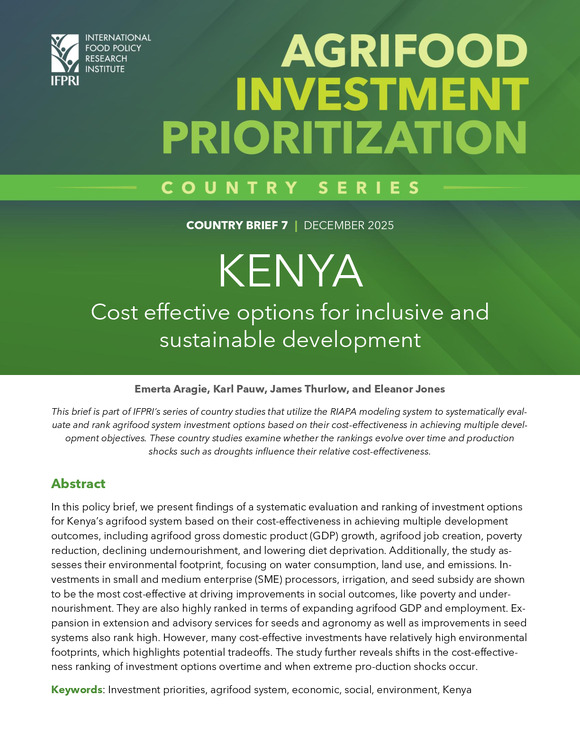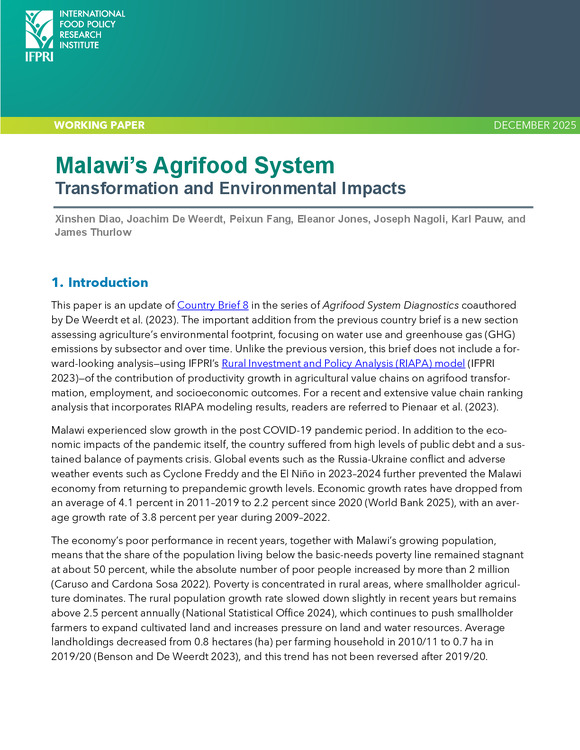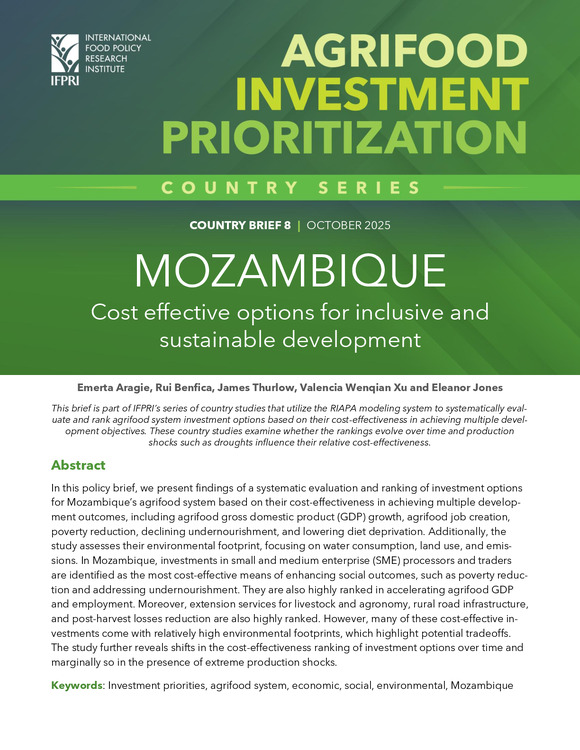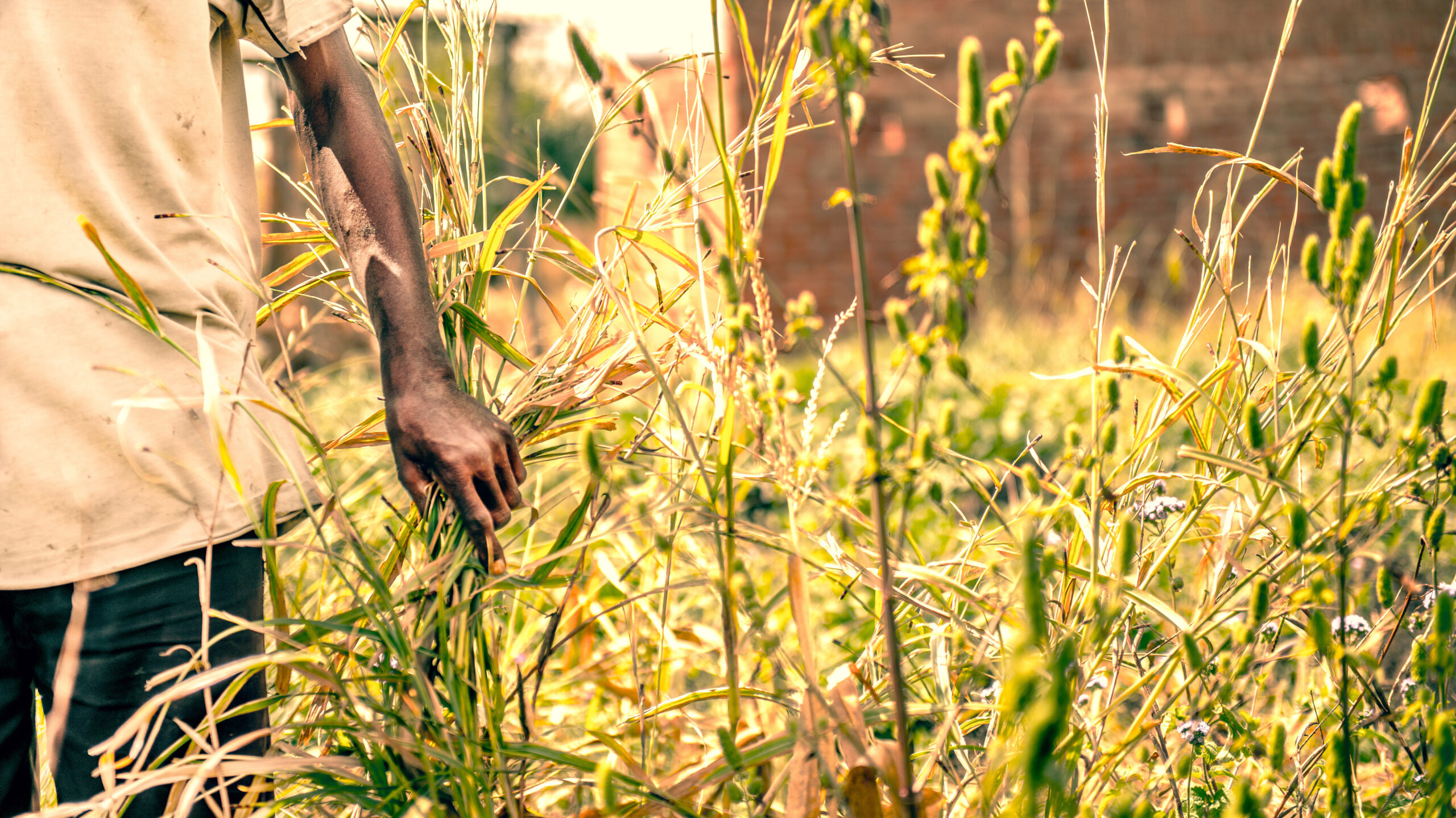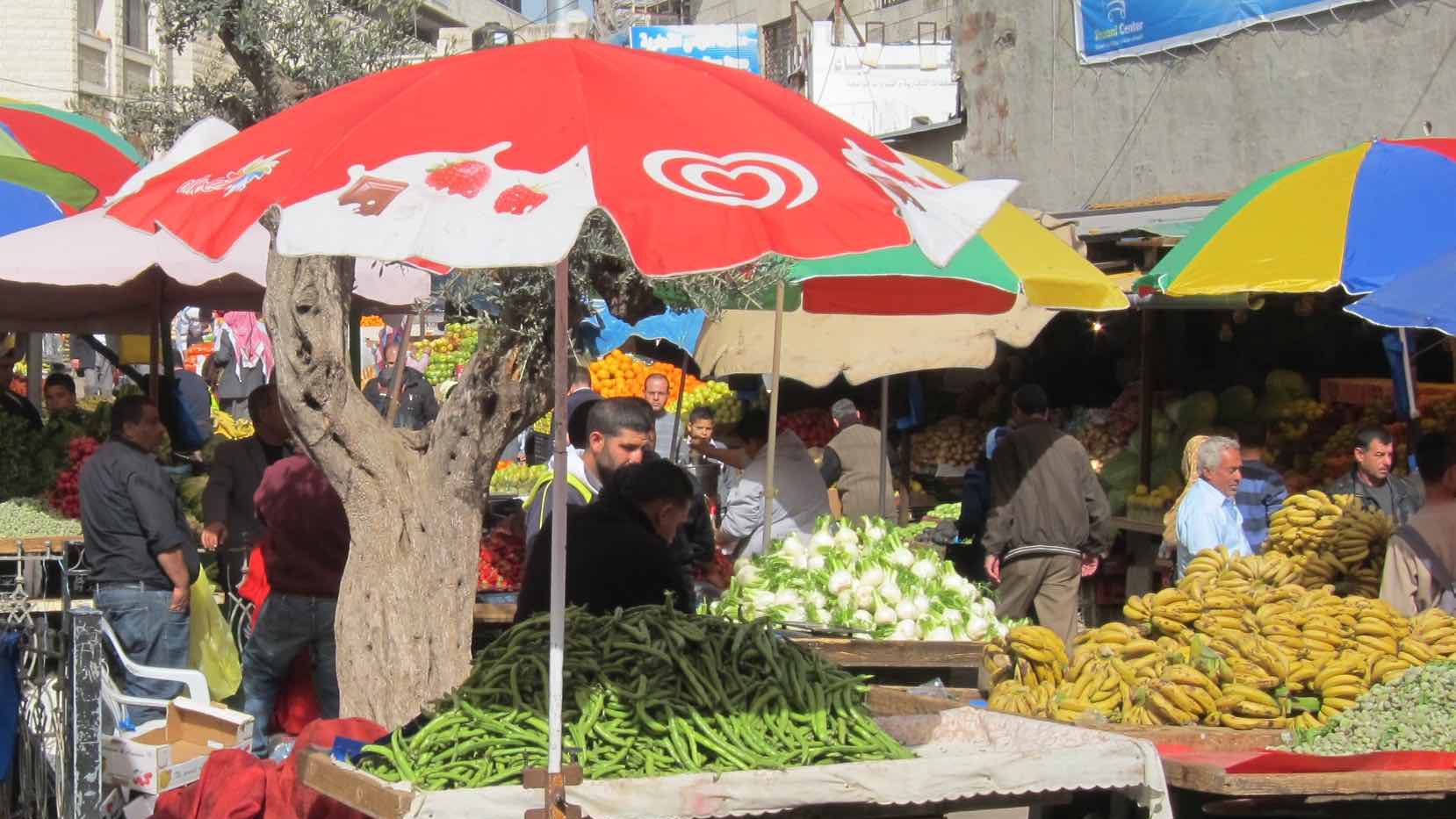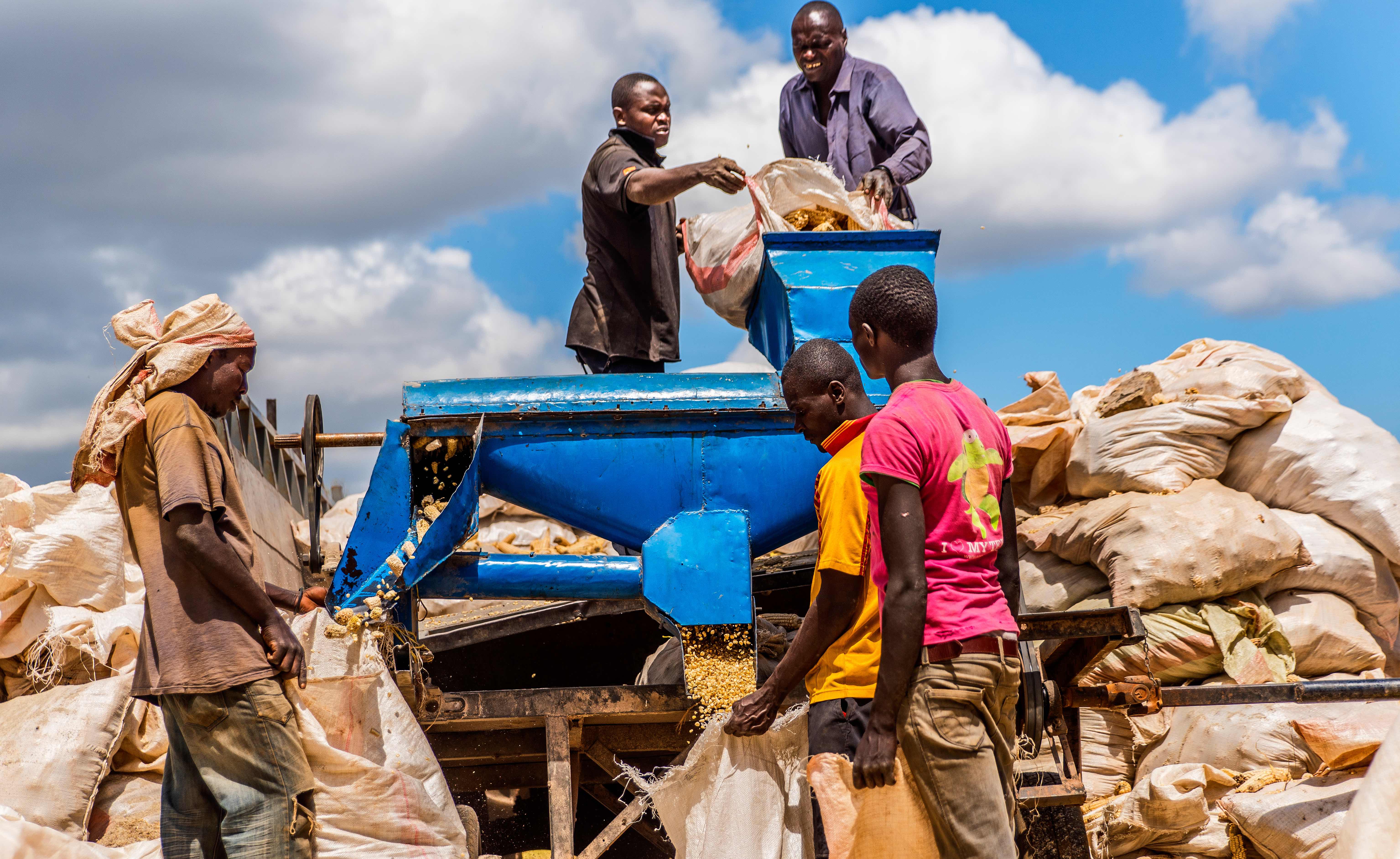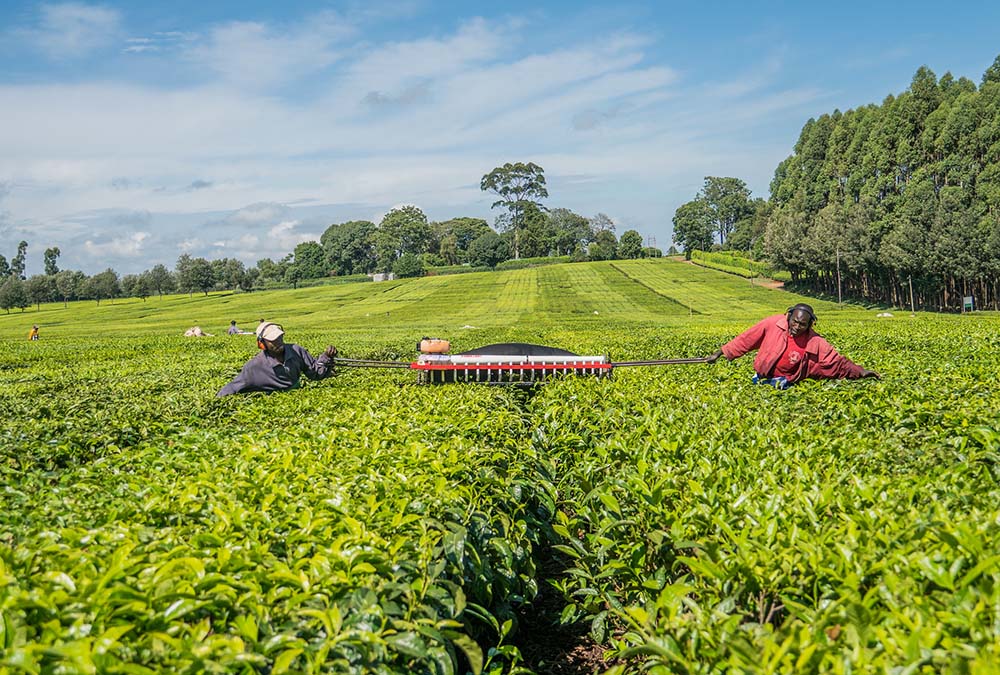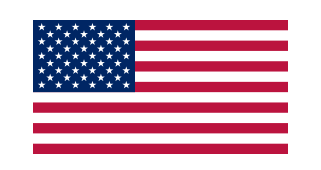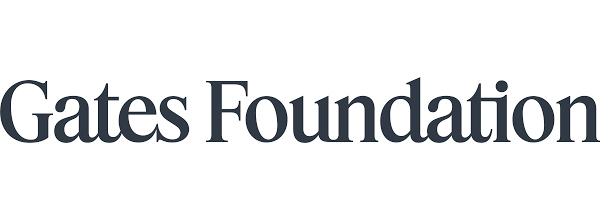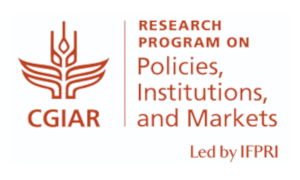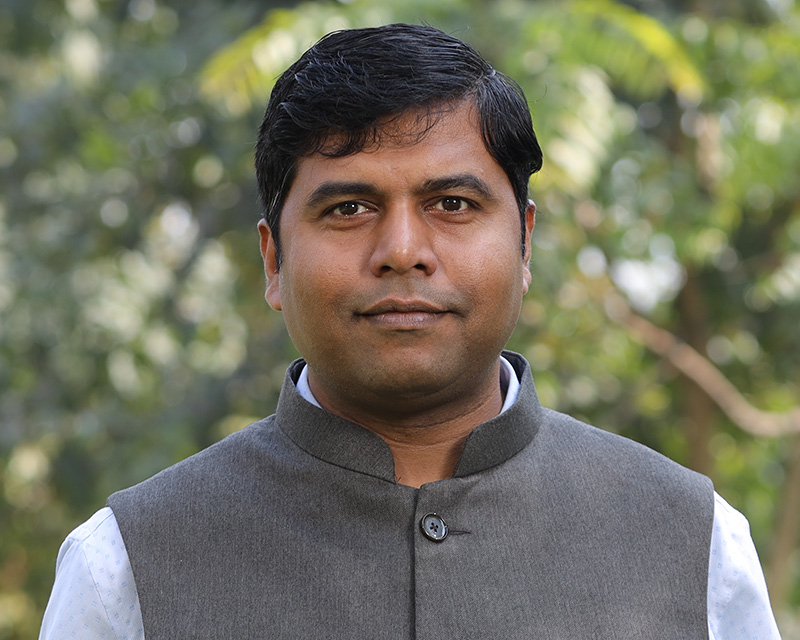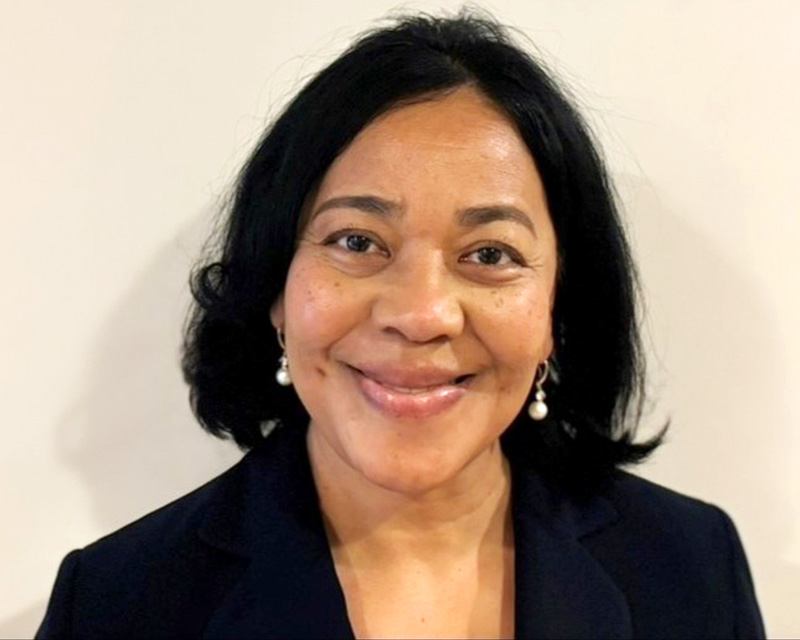Overview
The Rural Investment and Policy Analysis (RIAPA) data and modeling system is IFPRI’s primary tool for forward-looking, economywide country-level analysis, serving as a simulation laboratory for experimenting with policies, investments, or economic shocks. Figure 1 is a representation of the structure of the RIAPA system. At its core is IFPRI’s standard recursive-dynamic Computable General Equilibrium (CGE) model, an economywide simulation tool. IFPRI’s static and dynamic economywide models incorporate flexible behavioral features, such as nested production functions, imperfect substitution of imported commodities, and linear expenditure systems of consumer demand. Consumers and producers maximize utility and profits based on factor and product prices, which adjust endogenously to establish market equilibrium. In the dynamic version, population growth and urbanization are set exogenously, affecting labor supplies, while sectoral capital accumulation is endogenously determined based on past investments.
Figure 1. The RIAPA model and data systems
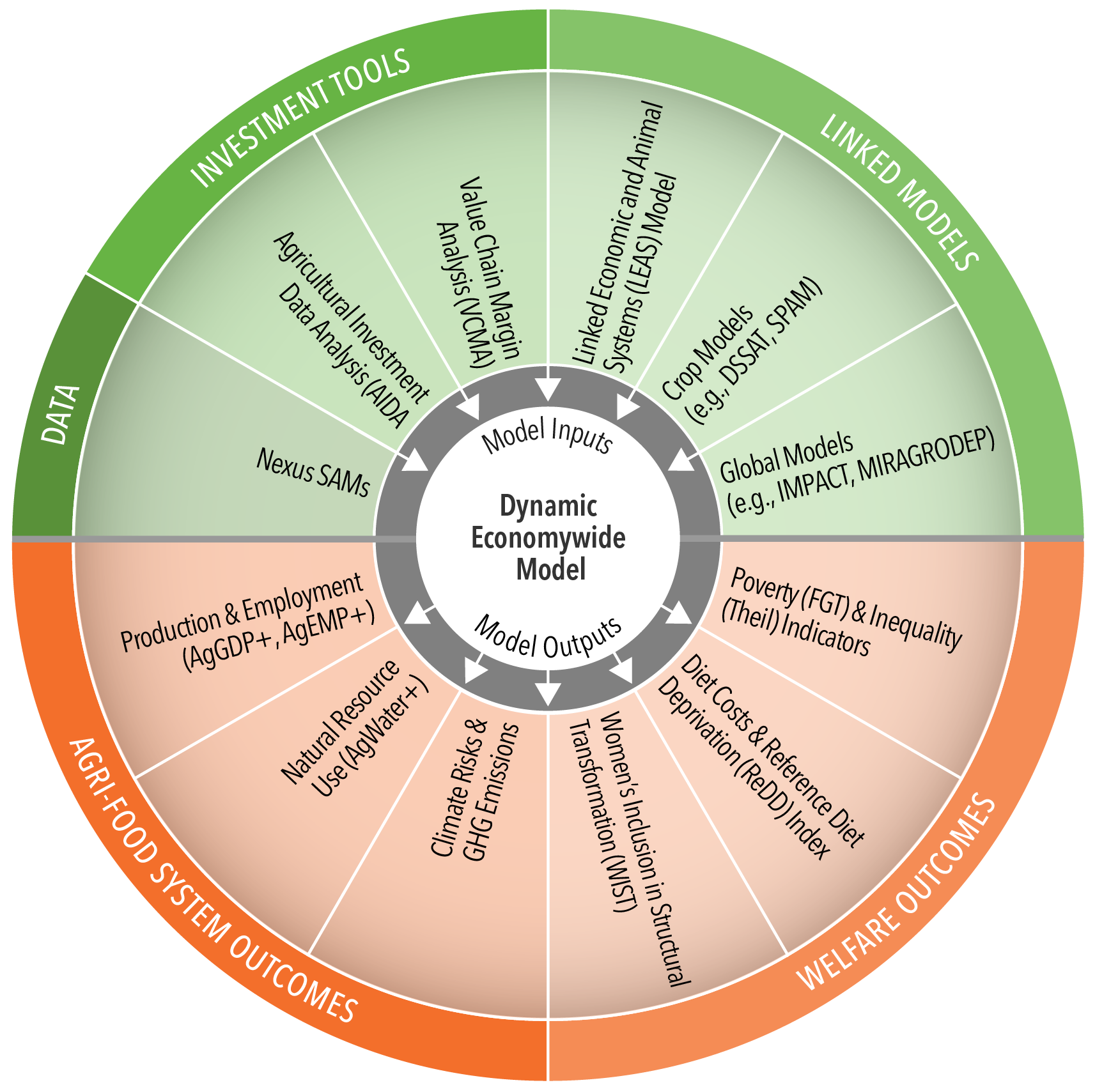
The CGE model is calibrated using a Social Accounting Matrix (SAM), which is an economywide database. IFPRI’s Nexus SAMs adopt common data standards and classification systems, ensuring greater data transparency and consistency across countries. A typical Nexus SAM includes 90 economic sectors, and about than half of these are in primary agriculture, agri-food processing, and food services. This detail makes RIAPA unique in its representation of national agri-food systems. IFPRI maintains publicly accessible SAMs for around 30 countries throughout Africa, Asia, and Latin America.
Beyond the core SAM data, the RIAPA data and modeling system incorporates several add-on modules that help specify simulation parameters and add depth to standard CGE model results:
- The AIDA module translates public agricultural investment spending into changes in sectoral productivity, taking into account the cost of investment. A value chain focused investment tool (VCMA) tracks how the introduction of new products or the upgrading of existing product supply chains compete with existing ones and can contribute to agricultural transformation (see here for an application). RIAPA can also be linked to other standalone models to allow analysts to exploit strengths of different types of models. For example, RIAPA can link to upstream livestock models, such as the LEAS model; crop models such as DSSAT or SPAM; multi-market models such as the IMPACT; and global CGE models such as MIRAGRODEP.
- Add-on modules also track specialized outcome indicators relevant to our understanding of inclusive agricultural transformation and economic development. These include several outcome indicators relevant to the agri-food system (AFS), including production and employment outcomes, natural resource use, and greenhouse gas emissions. RIAPA also includes various survey-based microsimulation modules that track welfare outcomes, including poverty and inequality, diet costs and the ReDD index, and the WIST indicator.
RIAPA’s features and capabilities
RIAPA includes useful distinguishing features that make it ideal for tracking the economywide impacts of policies, investments, or economic shocks.
- First, the detailed representation of the agri-food system (AFS) in Nexus SAMs allows analysts to measure impacts throughout the AFS and between the AFS and the broader national economy and global markets. The interconnectedness of components within the AFS implies that policies that affect farmers can have spillover implications for actors in the input supply, trade, agroprocessing, or food service sectors. Likewise, off-farm policies or investments, whether in the AFS or non-AFS, can affect farmers indirectly. RIAPA allows analysts to anticipate these effects by modeling the complex linkages that exist between economic actors.
- Second, RIAPA helps policymakers better understand the trade-offs associated with policy and investment choices. Not all policies or investments are equally effective at achieving all development outcomes and may simultaneously create winners and losers. Trade-offs may arise from competition over scarce resources, from structural differences between economic sectors (e.g., in terms of technologies, labor skill requirements, or downstream linkages to processing and services), and from differences in the way households interact with economic sectors (e.g., as workers or consumers). Ultimately, in a world of scarcity and trade-offs, policy choices must reflect society’s priorities, and the RIAPA model and data system can inform those prioritization decisions.
- Third, by capturing macro-micro linkages RIAPA helps analysts interpret implications of economywide shocks for individual households and people. RIAPA’s social inclusion outcome indicators on poverty, diet quality, and women’s inclusion are generated using survey-based microsimulation models linked to the core CGE model.
- Fourth, RIAPA’s country coverage has expanded rapidly in recent years to over 30 countries (Figure 2), mainly due to the new streamlined process for building Nexus SAMs. This wide coverage allows the modeling team to respond quickly to modeling and information needs in many countries and to undertake comparative analyses on emerging themes, for instance, on the economic costs of COVID-19.
Figure 2. Countries with RIAPA models
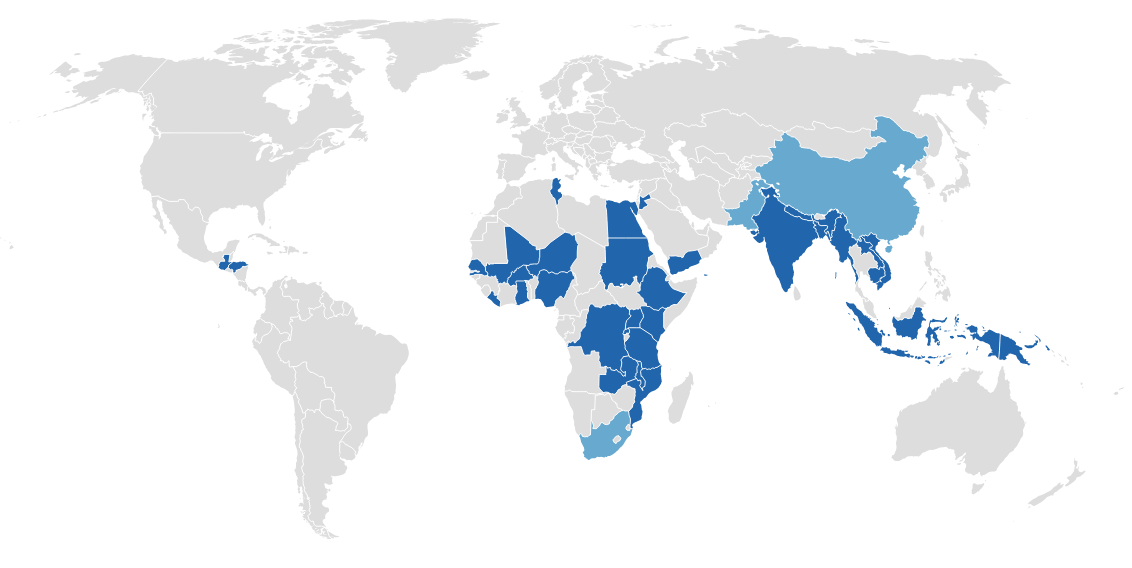
Model applications
CGE models are versatile tools for conducting ex ante impact analysis. IFPRI researchers have used CGE models to examine impacts of on-farm investments in irrigation, input subsidies, climate smart technologies, off-farm investments in grain stocks, and new value chains such as biofuels. An important area of our analysis with RIAPA has been on implications of growth in specific agricultural sectors such as teff in Ethiopia, the identification of priority value agricultural value chains, for example in Senegal, or cross-country comparisons of agricultural growth-poverty linkages. The RIAPA framework is also ideally suited to prioritizing among agricultural policies and investments, with studies recently concluded in Rwanda, Mozambique, Ghana, and Uganda.
More generally, CGE models have been used to assess impacts of socioeconomic policies such as cash transfers, labor market policies such as wage subsidies, trade policies such as export bans or fixed exchange rate regimes, and tax policies such as carbon taxes. Recent work considers the implications of policies for dietary nutrient availability and diet quality. CGE models are also ideally suited to analyzing the impacts of external shocks, including for example food price shocks or droughts and floods. IFPRI has extensive experience using integrated climate, biophysical, and economic models to evaluate economic impacts under future climate change.
For further information, please email: IFPRI-RIAPA.





